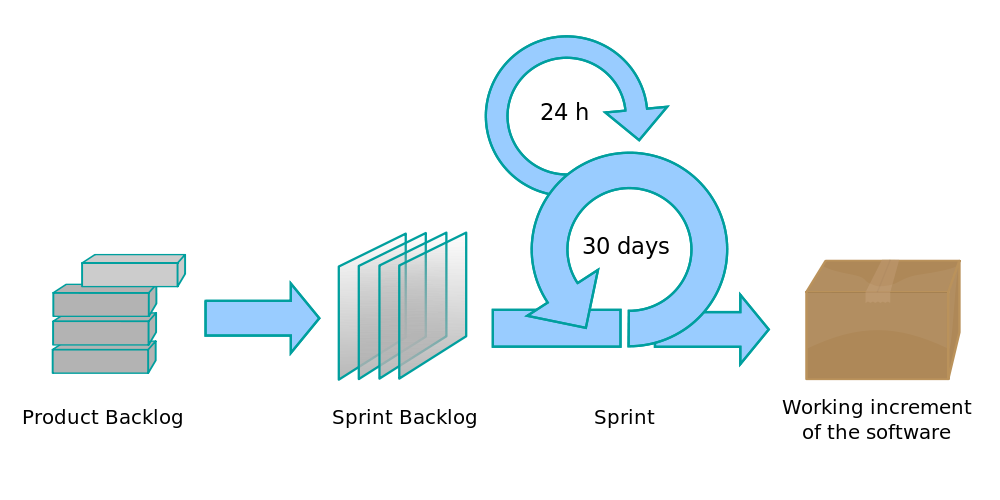According to the APM, “at its most fundamental, project management is about people getting things done.” It’s the way in which people are organised that can often mean success or failure in a project. Traditional and logical ways of managing projects may not be the optimal way of “people getting things done.” Agile challenges the way traditional ‘waterfall’ projects are run and introduces a new way to produce a product which presents a ‘win-win’ for both the users and stakeholders.
Agile Project Management and SCRUM methodologies
Popular methods of Agile project management include SCRUM which is most commonly used in software and development projects. Traditionally, projects were deemed to be the most efficient if they followed a linear, stage by stage approach. In a typical web build, this involves getting the brief, signing the brief off, going to design stage, development stage and then go live. This is very linear approach which is difficult to go back in the inevitable instance of changes needed. This often results in a lower quality product and high costs.

SCRUM works in cycles in which rapidly changing requirements are not only catered for; they are often crucial to the success and quality of the finished product. Scrum development progresses via a series of iterations called sprints, which last from one to four weeks. The Scrum model suggests each sprint begins with a brief planning meeting and concludes with a review. These are the basics of Scrum project management.
Here is a diagram of Agile project management in its most basic form:

- A project team is assembled including the product owner, scrum master and the team
- Website requirements are devised and put into a product backlog
- These requirements are put into a sprint backlog in order of importance
- The team undergoes a ‘sprint’ which involves requirements definition, product design, coding and testing
- The end result of every sprint is a potentially shippable product
- Each sprint after this will take customer feedback and client feedback on board to create a new sprint backlog
- The cycle continues until all stakeholders are happy with the finished product

Here is a great video explaining how SCRUM project management works and gives a real life example of how Agile is used in web build context. The video also explains key roles, the daily stand up and some advantages and disadvantages.
There are several advantages to this type of ‘iterative’ project management:
- Increased customer satisfaction by rapid, continuous delivery of useful web solutions
- Emphasis on relations, people and interactions rather than process and tools. Constant interaction to deliver a higher quality product
- Live product is delivered frequently (weeks rather than months)
- Close, daily cooperation between business people and developers
- Continuous attention to technical excellence and good design
- Ability to regularly adapt to changing circumstances.
- Change in scope and requirements are accounted for
To see whether Agile is right for your project? Get in touch with us today on 01227 686898 who can talk you through your project requirements. ExtraDigital operates in an Agile environment and can provide great web solutions that tick all the boxes. Send us a contact form with your requirements.










